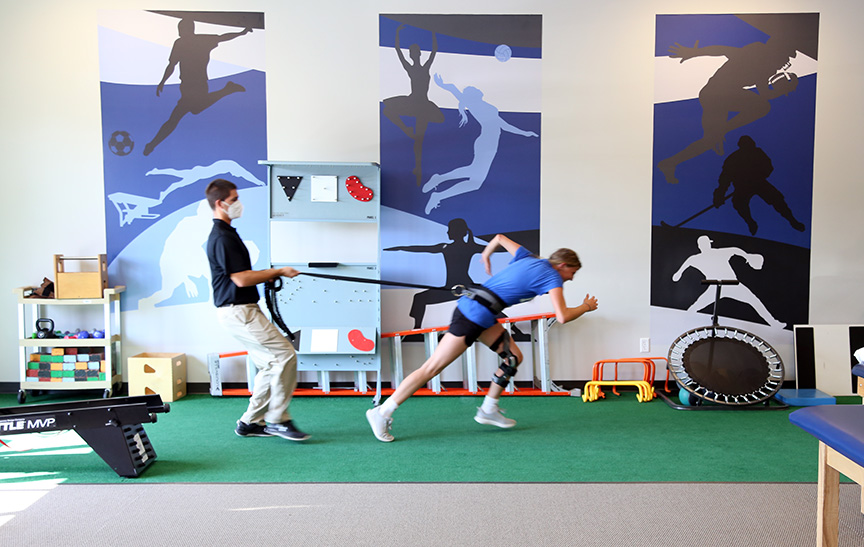News
Physical Therapy for Shoulder Pain
How Physical Therapy Can Help With Shoulder Pain and Injury

It’s that time of year again when we all start getting active with outdoor activities. Shoulder problems often follow as we start yardwork, golf or your favorite spring cleaning activities.
Whether it’s rotator cuff tears or other injuries to the muscles surrounding the shoulder, physical therapy for shoulder pain is often a successful, non-surgical treatment. It aims to strengthen the muscles around your shoulder to improve its function and your mobility.
Physical therapy treatment is always custom-designed to help you recover from injury and regain mobility. We will also advise on how to alter everyday activities to avoid re-injury. You will be assigned a unique home-exercise routine to follow to help maintain function once therapy sessions are complete.
In some cases, physical therapy can prevent the need for surgery, which is especially beneficial for older adults who may not have as high a success rate with surgery. Studies show the majority of patients find physical therapy for shoulder injuries to be adequate, although the length of recovery can vary from person to person. Even in cases where surgery is inevitable, physical therapy is a great way to prepare and strengthen the body prior to and after surgery.
Physical Therapy interventions may include:
Kinesiology taping: While athletic taping aims to limit movement, kinesiology taping encourages movement in a safe and secure way while increasing circulation. Depending on the type of shoulder injury you’re suffering, the physical therapist may use one of these taping methods.
Activity modification: To reduce the likelihood of your shoulder injury returning, your physical therapist will provide you with ways in which to modify the way you perform everyday activities, so your shoulders are properly supported. For example, if you’re dealing with a frozen shoulder, the physical therapist may suggest you avoid excessive rest for your shoulder.
Workplace ergonomics: In this day and age, it’s almost impossible for some people to not be sitting at their computer desk for upwards of eight hours a day. Ergonomics is something your physical therapist will likely discuss with you — its aim is to find ways to ensure your body is getting the proper support it needs. This could be anything from doing specific exercises at your desk or investing in a new office chair.
Home exercise program: The shoulder physical therapy exercises you do with your physical therapist will likely need to be maintained to some extent once your sessions are complete. The physical therapist will curate a set of at-home exercises to help maintain the progress you’ve made. They’ll practice the exercises with you during sessions, so you can be confident in how to do them when you get home.
If you have any questions regarding our services or would like more information, contact any of our clinics for more information.
Thank you for considering Central Nebraska Rehabilitation for all your rehabilitation needs.
